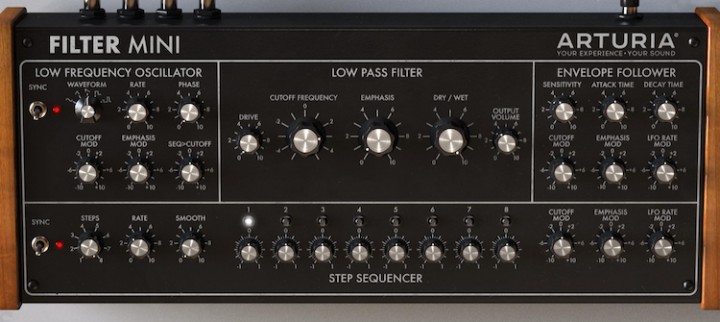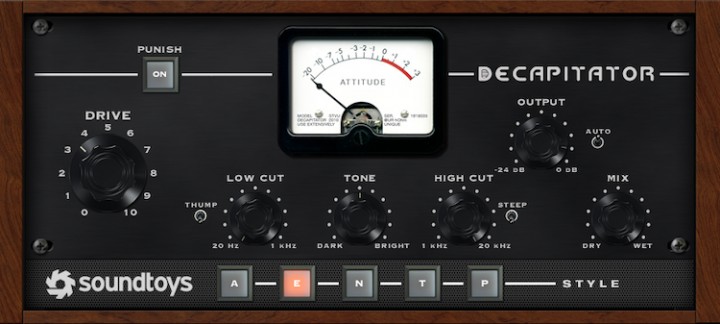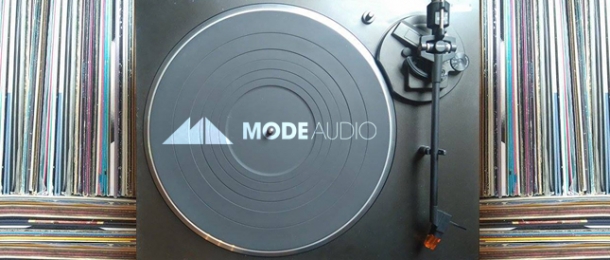
Nostalgia was big in 2019 but thanks to a certain pandemic that has swept the globe over the past 12 months, it had an even bigger year in 2020.
Leaving the bug-that-must-not-be-named to one side for now, today I’d like to focus our collective production lens on tools and tricks that will help make your music to sound like it came from another era, a time of transistors, tubes and frayed wires!
From Synthwave to LoFi Hip Hop, that hazy, retro sound is an irresistible force in today’s popular music and one that we certainly don’t mind indulging in more than a little here at ModeAudio. Let’s take a look at my 5 top tools for taking things back to the days of low fidelity, shall we?
Whilst my aim here is far from presenting a comprehensive list of devices that will help grunge up your mix, I’d like to explore only the most crucial and essential toys of the trade and thus provide you with a solid platform from which to begin your gritty sonic experiments. Read? Let’s go!

1. Filter Filter On The Wall
Whilst the humble EQ and compressor are almost undoubtedly the most important tools known to man, or at least us music producers, the filter comes in a close runner-up.
For those of us looking to turn back the clock on our sound, filtering becomes more important still; specifically of the low pass variety. Any DAW worth its salt will have a native LP filter for you to use, ready to go as soon as you boot up your software. Some might even offer drive or saturation controls; more on this below!
Throw it on everything - synths, vocals, guitars, bass and especially, drums. If your drums are too bright, you’ve lost the LoFi battle; I would suggest opting for gentler sloped filtering for our purposes here, such as 12dB or even 6dB. This will allow more of the highs to poke through than with a steeper slope, say 24dB, though in a quieter state.
The suggestion of frequencies and sounds that we can’t quite hear is crucial here, hence the importance of rolling back those highs with some filtering! Brightness and treble in general can be aggressive and tiring forces on the ear, and our goal here is to produce a hazy, mellow sound, so we need to dial those highs back to get there.
Here’s a quick beat I cooked up without filtering:
Now let’s introduce some fairly subtle low pass filtering on each of the elements:
Come on feel the nostalgia!

2. Saturation Satisfaction
The next tool in-line to the throne of LoFi importance is, of course, saturation, which has the power to deliver that warm and fuzzy feeling to your tracks in an instant.
From mellow, crispy overdrive to full-on frazzled cacophony, saturation comes in many forms but we should make a subtle distinction here between it and and its cousin, distortion.
Saturation produces, or at the very least should produce, a fairly subtle effect, warming up the low-mids and introducing just a sliver of grit and crunch to proceedings. This is done via analog modelling, studying the behaviour of old studio gear and recreating what happens when signals are driven just a little into the red.
As I said above, you might be able to achieve this using a good filter plugin; Logic Pro X's native auto-filter has both pre and post drive settings, though you'll need to be mindful of volume compensation. Softube's peerless (and free) Saturation Knob is really an ideal tool for our uses here though, or something like Soundtoys' excellent Decapitator (which you can see in the image above).
Again, this can and should be used on pretty much every element in your mix; and, again, it is especially important for your drums, unless of course you have some pre-cooked MPC drum hits to throw in your sampler instead.
Here’s our little beat from above but with some analog-style drive added for good measure:

3. Bit-Crush Your Life
A distantly related tool to saturation, bit-crushing is another retro-inspired device that allows producers to dial back both the sample rate and bit depth of audio.
Older music production hardware was famously lower resolution than today’s sparkling CPUs, such as the 12bit processing of the classic MPC60 from Akai, so dialling in some bit-crushing into your mix can work wonders for your LoFi ambitions.
Personally, I’d focus on the bit depth side of things here, as lowering the sample rate for audio can quickly start to introduce harsh, high frequencies and aliasing - 12bit audio is a good place to start owning to its MPC heritage as mentioned above and don’t forget to crank any gain or drive controls you might have at your disposal:
As it’s more of an obvious sonic treatment, I’ve only used bit-crushing on my drums here, using Logic Pro X’s Bitcrusher plugin set to 12bit, boosting the drive a fair whack and using the mix control to blend the sound with the unprocessed drums.
Just for fun, here’s some bit-crushing on the entire mix:
Pretty chunky actually!

4. Chorus, Or The Lesser Known Warble
Next up we have one of my very favourite tools in the box regardless of context, chorus. Almost instantly taking us back to the 80s and indispensable to retro-focused genres such as Synthwave, this device helps us deliver some warping and warbling into the precision-engineering of modern DAWs.
By using delay lines with subtle, LFO-modulation delay times, chorus brings us width and a softened, hazy aesthetic to whatever sound we decide to run through it. As ever, it’s important to be careful about blending and not going overboard, so having a mix control is pretty indispensable.
Chorus finds a natural home on guitar and piano tracks, anything carrying your lead melody really, though as with the other tools mentioned above, it will find a use on any elements of your track you care to try it with.
Having applied some chorus to both the bass and piano part of my beat, here is the result:
This is a fairly subtle use of chorus here, but this is one effect you can really go to town with, should you so choose:
I actually applied a fancy tape processing emulation plugin to my piano here, which does a great job of bringing the warble factor into play; any plugin that you can find that incorporates wow and flutter controls should be able to deliver something similar for you as well though, if you don't have a tool like this to hand.
We’re really lowering the digital tone now; let’s move onto the final chapter.

5. Noise Knows Best
The final stop on our brief tour through the LoFi landscape is perhaps the most obvious - noise. Without just a lick of vinyl crackle or a processed field recording of rain, where would LoFi Hip Hop be, really?!
You can of course bring the noise in numerous ways, some of which I’ve written about before in this magazine. Some of the tools I’ve outlined above will also help nudge things in the right direction here, though I’m talking more about a steady texture or continued noisy presence than something that is tied to a specific element of your track.
iZotope's excellently free Vinyl plugin is ideal for our purposes here, as is RC-20 Retro Color if you want to go down the paid route; another option is simply to sample a turntable or get your hands on our free Vinyl Rack for Ableton Live, which contains audio samples that you can of course use in any DAW you like.
Another option is to use more left-field sound textures and sound design, either designed yourself or taken from packs should as those we specialise in here at ModeAudio. This can lend more character and individualism to your noise layers, rather than opting for a more classic approach.
Find yourself a nice layer of noise that you can imagine serving as a kind of soundbed for your beat to sit atop, drag into your mix and pull back the volume till you can just hear it and hey presto!
Here’s the beat from above but with the ‘Vinyl_Crackle03’ sample added, which is included in our free drum rack:
It really helps to finish things off and give us that authentic, analog touch, don’t you think?
So there we go, 5 top tools for bringing some crunch and sonic gunge into your life - check them out and dirty up your sound today!













